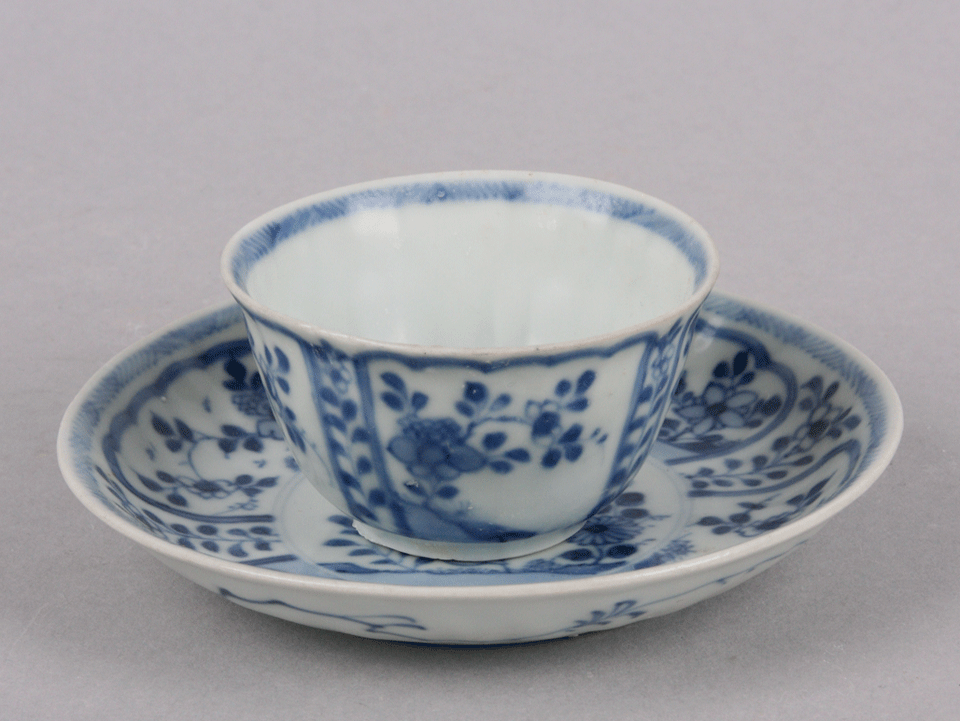
Teacups and saucers
Chinese blue-and-white ware typically involves painting a design on a raw porcelain vessel, covering the vessel and design with a glaze, and firing it. The blue color comes from cobalt. Because the glaze goes over the paint, the technique is often referred to as "underglaze blue painting."
Blue-and-white vessels were first developed in the Middle East, and spread east and west from there. The technique was rare in China until the early 1300s, when the town of Jingdezhen began producing blue-and-white ware in quanitity. Jingdezhen remains a center of production for blue-and-white ware to this day.
See source code for copyright information. Page last revised on February 26, 2016. Please report problems to toh@unm.edu